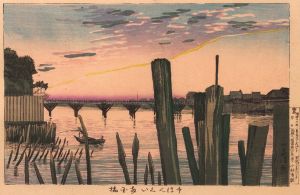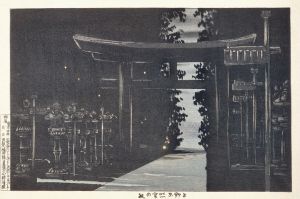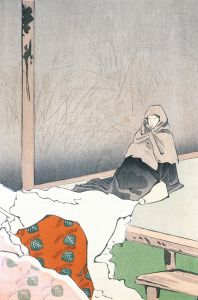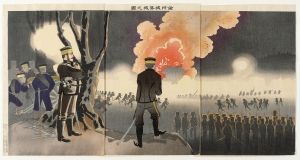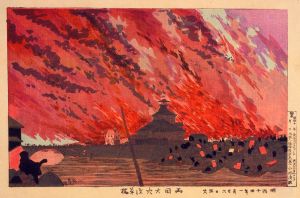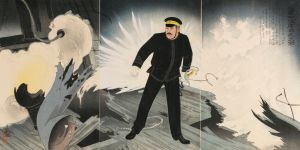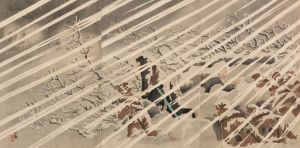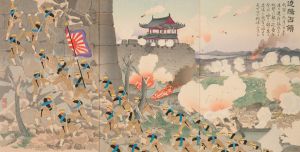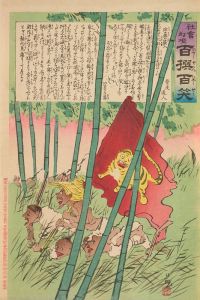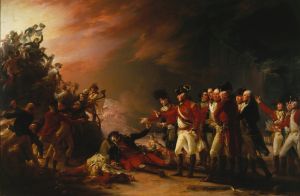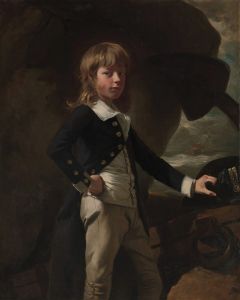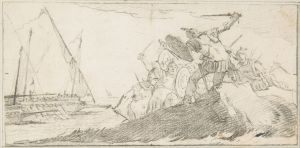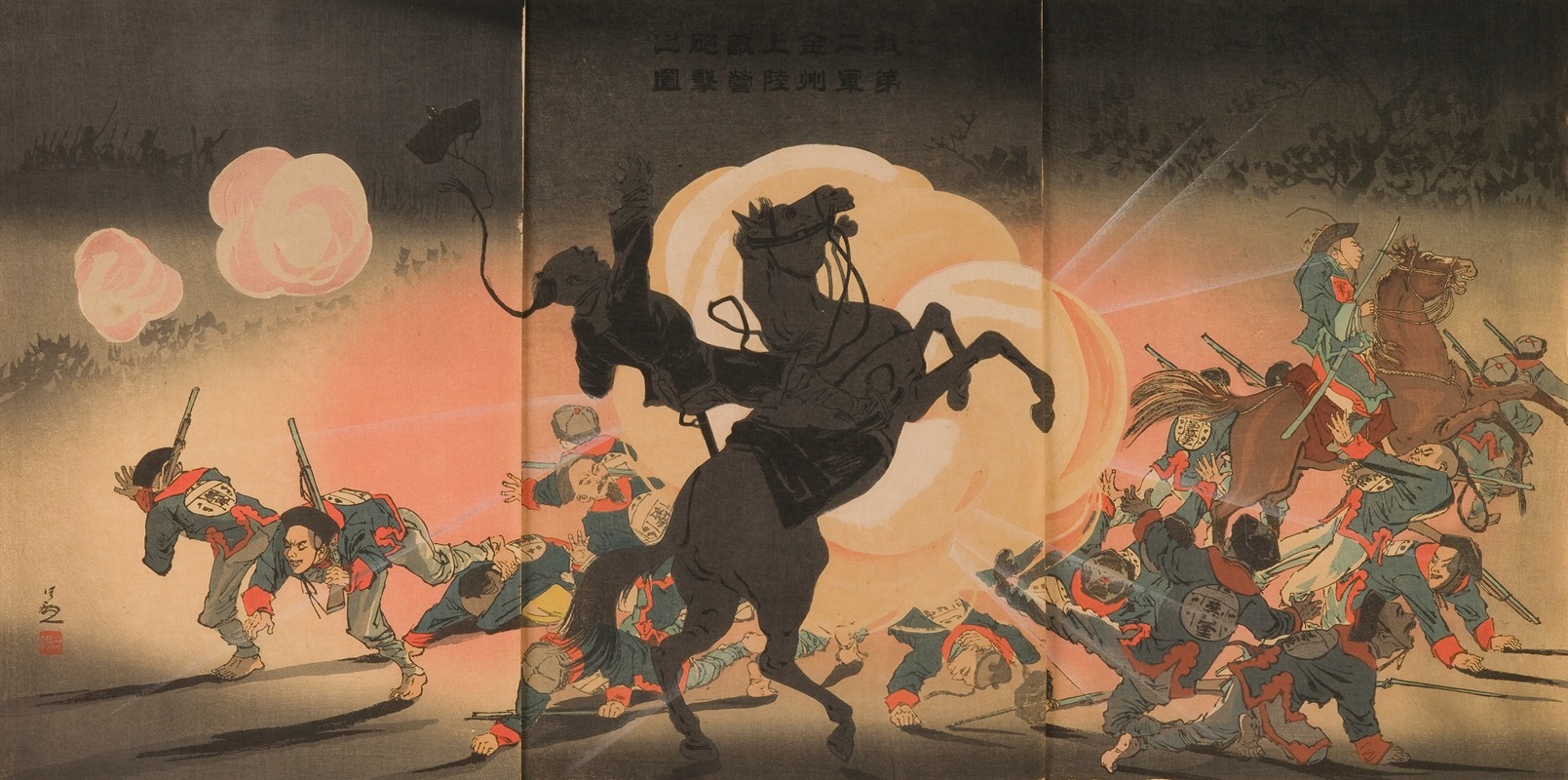
Bombarding the Enemy Camp as Our Second Army Lands at Jinzhou Fortress
A hand-painted replica of Kobayashi Kiyochika’s masterpiece Bombarding the Enemy Camp as Our Second Army Lands at Jinzhou Fortress, meticulously crafted by professional artists to capture the true essence of the original. Each piece is created with museum-quality canvas and rare mineral pigments, carefully painted by experienced artists with delicate brushstrokes and rich, layered colors to perfectly recreate the texture of the original artwork. Unlike machine-printed reproductions, this hand-painted version brings the painting to life, infused with the artist’s emotions and skill in every stroke. Whether for personal collection or home decoration, it instantly elevates the artistic atmosphere of any space.
"Bombarding the Enemy Camp as Our Second Army Lands at Jinzhou Fortress" is a woodblock print created by the Japanese artist Kobayashi Kiyochika during the First Sino-Japanese War (1894–1895). Kiyochika, known for his ukiyo-e prints and his depictions of modern warfare, produced this work as part of a series of prints illustrating Japan's military campaigns during the conflict. The print reflects the artist's engagement with contemporary events and his ability to merge traditional Japanese artistic techniques with modern subject matter.
The artwork portrays a dramatic scene of Japanese forces bombarding enemy positions as part of their campaign to capture Jinzhou Fortress, a strategic location in the Liaodong Peninsula. The Second Army, under the command of General Ōyama Iwao, played a significant role in the Japanese military's operations in this region. The print captures the intensity of the battle, with explosions and smoke dominating the composition, emphasizing the chaos and violence of war.
Kiyochika's work is notable for its use of vibrant colors and dynamic composition, which convey a sense of movement and urgency. The artist employed a combination of traditional woodblock printing techniques and Western-inspired perspectives to create a visually striking image. This blending of styles was characteristic of Kiyochika's approach, as he sought to document Japan's modernization and its emergence as a military power.
The print also serves as a piece of wartime propaganda, celebrating Japan's military successes and fostering national pride. During the First Sino-Japanese War, such prints were widely distributed and played a role in shaping public perception of the conflict. Kiyochika's works, in particular, were highly regarded for their artistic quality and their ability to capture the spirit of the times.
"Bombarding the Enemy Camp as Our Second Army Lands at Jinzhou Fortress" is an example of how art was used to document and interpret historical events, as well as to promote a sense of unity and purpose among the Japanese populace. Today, the print is studied both as a historical artifact and as a work of art, offering insights into the cultural and political climate of Meiji-era Japan.





